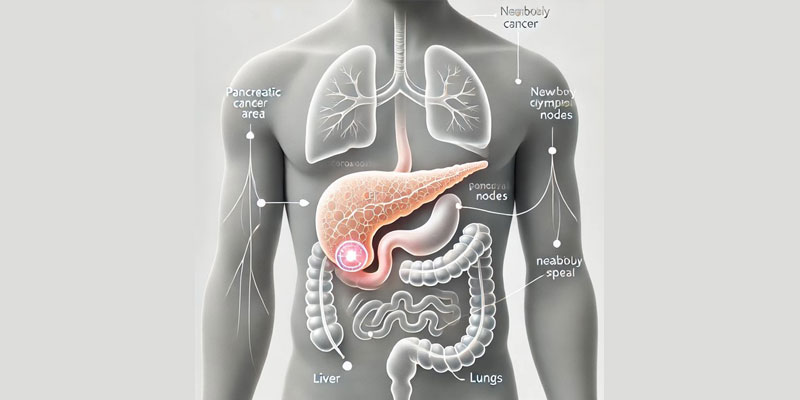Pancreatic cancer is one of the most dangerous types of cancer. The pancreas is an important organ in the digestive system, responsible for producing digestive enzymes and hormones like insulin that regulate blood sugar. When cancer develops in the pancreas, it can severely impact the body’s energy production and digestive functions. If left unchecked, pancreatic cancer often spreads to other parts of the body, which increases the risk and severity of the disease.
How Pancreatic Cancer Spreads
In the early stages, pancreatic cancer may be confined to the pancreas, but it rarely stays there. As it grows, cancer cells can form tumors that invade nearby organs, blood vessels, and lymph nodes, eventually reaching other areas of the body. This spread is what makes pancreatic cancer so dangerous.
- Spread to Nearby Organs
Pancreatic cancer can affect nearby nerves and blood vessels, allowing it to reach surrounding organs like the intestines, stomach, and lungs. This proximity makes it easy for the cancer to expand beyond the pancreas.
- Spread Through the Lymphatic System
The lymph nodes are a central part of the body’s immune system. When pancreatic cancer spreads to the lymph nodes, it can travel to different areas of the body via the lymphatic system.
- Spread Through Blood Vessels
Pancreatic cancer cells can also move through the bloodstream, spreading to vital organs like the liver, bones, and lungs, which further complicates treatment and increases risks.
Controlling and Treating Pancreatic Cancer
There are advanced treatments available today to manage the spread of pancreatic cancer, including surgery, chemotherapy, and radiation therapy. However, because pancreatic cancer is often difficult to detect in its early stages, it’s important to get regular check-ups, especially if at risk, to catch any signs early.
Conclusion: Pancreatic cancer is a highly dangerous disease that can spread to other parts of the body. Early detection and prompt treatment are crucial in improving survival chances and managing this condition.

